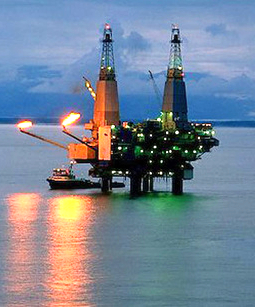New age of European gas coming as BP stretches further
 Many European counties will have an entirely new set of options for resources and energy in coming years, as a number of major projects bring the continent’s new power paradigm closer.
Many European counties will have an entirely new set of options for resources and energy in coming years, as a number of major projects bring the continent’s new power paradigm closer.
New pipelines will provide natural gas from massive fields in Russia and the Caspian Sea to consumers in equally large Mediterranean markets including Italy, Greece and Turkey.
The new energy map for Europe will be drawn from 2015, as Russian state-owned producer Gazprom brings its 2400km South Stream pipeline into the game. Within a couple of years, the immense BP Shah Deniz 2 project in Azerbaijan will join up with the new Southern Gas Corridor to Europe.
With around 60 per cent of Europe’s gas currently coming from Russia, Norway and Algeria, the new link with Azerbaijan's Shah Deniz field will add unprecedented diversity and competition to the market.
Confirmation of the link came in recent weeks, when Shah Deniz partners announced a final investment worth $US28 billion ($A31.5bn) for their last stage of the project in the Caspian Sea.
The investment prompted a torrent of subsequent moves from other companies to upgrade pipes and other parts of the supply chain so that the Caspian gas can flow freely to European homes.
Contrsution commitments so far include; expanding the South Caucasus Pipeline through Azerbaijan and Georgia, building the Trans Anatolian Gas Pipeline (TANAP) across Turkey, and building the Trans Adriatic Pipeline (TAP) across Greece, Albania and into Italy. The combination of these projects with gas transmission infrastructure to Bulgaria will for the new Southern Corridor to Europe.
Once the Corridor is open, about 16 billion cubic metres of gas per year will be shuttled from the Shah Deniz fields up to 3500km to consumers across Georgia, Turkey, Greece, Bulgaria and Italy.









 Print
Print